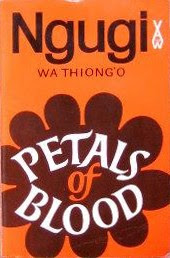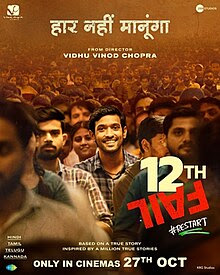TOPIC OF THE BLOG:-
This blog is a part of Thinking Activity assigned by Megha Trivedi Ma'am, a visiting faculty at the Department of English, MKBU. In this blog I am going to discuss some of the ideas about Petals of Blood by Ngugi Wa Thiong’o.
NGUGI WA THIONG'O
Ngugi wa Thiong'o, born on January 5, 1938, in Limuru, Kenya, was a prominent writer in East Africa. He was recognized as the foremost novelist in the region. His widely acclaimed work, Weep Not, Child, published in 1964, marked a significant milestone as the first major novel in English by an East African author. In response to his growing awareness of the impact of colonialism in Africa, Ngugi embraced his traditional name and began writing in the Bantu language spoken by Kenya's Kikuyu people. (Britannica)
To know more about him here is the video available in YouTube:-
PETALS OF BLOOD:-
"Petals of Blood" is a novel written by Kenyan author Ngũgĩ wa Thiong'o, Originally written in Gikuyu and published in 1977. The novel is set in post-colonial Kenya and explores various themes such as the impact of colonialism, the struggles of the working class, political corruption, and the search for identity and meaning in a changing society. The story revolves around four main characters - Munira, Karega, Wanja, and Abdulla. These characters come from different backgrounds but are brought together in the small village of Ilmorog to confront the challenges of modern Kenya. Each character represents a different facet of society.
SIGNIFICANCE OF THE TITLE:-
The name "Petals of Blood" comes from a part of Derek Walcott's poem "The Swamp." In the poem, Walcott suggests that nature has a dangerous power that deserves our respect. This challenges the idea that humans can peacefully live together with nature.
Conceals within its clutch the mossbacked toad,
Toadstools, the potent ginger-lily,
Petals of blood,
The title, "Petals of Blood," is metaphorical and suggestive of the sacrifices, struggles, and suffering of the characters in the novel. The "petals" may symbolize the lives, dreams, and aspirations of individuals, while "blood" alludes to the pain, violence, and societal conflicts that form a backdrop to the narrative. The juxtaposition of "petals" and "blood" in the title creates a powerful contrast, highlighting the intersection of beauty and struggle.
CHARACTERS:-
In this novel there are some important characters like Munira, Wanja, Karega, Abdulla, Kimeria, Nderi wa Riera, Chui, Mzigo, Nyakinyua, Joseph, etc. but These four are the main characters who drove the whole story.
Munira:-
Munira is a schoolteacher who plays a central role in the novel. His occupation reflects his commitment to education and the transformative power he believes it holds for society. Munira is portrayed as an idealist who sees education as a means of bringing about positive social change. His character embodies the hope for a better future through the enlightenment of the younger generation. Throughout the narrative, Munira faces personal and ideological struggles. His dedication to education and social justice puts him at odds with the oppressive forces in the society, and he becomes entangled in the larger conflicts unfolding in Ilmorog.
Karega:-
Karega is another teacher and intellectual in the village who becomes an influential figure. He is critical of the impact of colonialism and capitalism on the community, reflecting the broader themes of the novel. Karega's character serves as a voice of social critique. Through his intellectual pursuits, he challenges the existing power structures and ideologies, contributing to the novel's exploration of post-colonial issues. As the narrative progresses, Karega undergoes significant personal and ideological transformations. His character development is intertwined with the larger socio-political changes in Ilmorog.
Wanja:-
Wanja is a barmaid who becomes a symbolic figure representing the struggles of women in a patriarchal society. Her character highlights the exploitation faced by women, but she also strives for independence and dignity. Wanja's character is nuanced, portraying the complexities of women's experiences in a changing society. Despite facing challenges, she exhibits agency and resilience in her quest for a better life.
Abdulla:-
Abdulla is initially portrayed as a successful capitalist, running a prosperous shop. His character represents the allure of economic success within a capitalist framework. As the story unfolds, Abdulla becomes disillusioned with the capitalist system. His character arc explores the moral and ethical consequences of pursuing wealth at the expense of social justice and human well-being. Abdulla's character contributes to the novel's examination of economic inequality and the impact of capitalism on individuals and communities.
THEMES OF THE NOVEL:-
Colonialism: The novel explores the impact of colonialism on the people and the land, examining how it has shaped the characters' lives and the societal structures they navigate.
Capitalism: The narrative critiques the effects of capitalism on the rural and urban poor, highlighting economic exploitation and social inequality.
Identity and Cultural Struggles: The characters grapple with issues of identity and cultural conflict in the face of modernization and Western influences.
Corruption and Injustice: The novel addresses political corruption and social injustice, with the characters seeking justice against a backdrop of systemic problems.
Let's see some of the Articles on Petals of Blood.
HISTORY, SEXUALITY, AND GENDER IN NGUGI’S PETALS OF BLOOD:-
This article contends that Petals of Blood presents two distinct models for anti-imperial history. The first model portrays a global historical struggle, often termed epochal struggle. The second model delves into the national struggle within Kenya, characterized as a generational struggle.
Notably, Petals of Blood is intriguing because it showcases Ngugi's political perspective evolving from a focus on decolonizing nationalism to a broader identification with anti-imperial ideologies. This shift can be linked to Ngugi's research at the University of Leeds, particularly on George Lamming, and his broader exploration of Caribbean literature.
The novel draws its title from Derek Walcott's poem, 'The Swamp,' and references V.S. Naipaul's novels, 'The Mystic Masseur' and 'The Mimic Men.' However, the influence of Lamming, especially his work 'In the Castle of My Skin,' is particularly evident in the structure of Petals of Blood.
In exploring Caribbean literature and the black diaspora, Ngugi identifies a shared global historical narrative and a community with interconnected grievances. Petals of Blood, therefore, engages in an aesthetic of reconnection, intertwining the struggles for liberation in the Caribbean, African-American, and African contexts.
The article suggests that Petals of Blood can be seen as a bible of African world-historical experience, with a vision of socialist liberation and black world history reaching a culmination akin to apotheosis. This vision, rooted in global Cold War politics, consciously opposes anti-Communist Christian evangelism.
The second historical model in Petals of Blood is framed around Kenyan national history as a generational struggle. The novel employs Gikuyu customary institutions, such as age-set naming and the practice of itwika, to conceptualize a democratic form of political power.
Generational history, seen through the age-set naming mechanisms, implies a lineage of struggle. The novel revives the concept of itwika, emphasizing a peaceful transfer of power every 30 years as a form of revolutionary democracy. Through characters like Ndemi, Kimathi, and Karega, Petals of Blood advocates for a 'democratic' Gikuyu government, opposing colonial and neocolonial rule. However, the article notes the complexity introduced by the novel's treatment of paternity, pointing out the proliferation of signs and the challenges to stable notions of lineage in a novel with diverse literary allusions and political affiliations.
In conclusion, the article suggests that the two models of history in Petals of Blood—generational and epochal—face challenges in working together due to the novel's nuanced treatment of femininity, lineage, and paternity. It proposes that examining the covert history of female struggle in Kenya, particularly the role of revolutionary prostitutes in the Mau Mau movement, could offer a broader understanding of revolutionary agency in the novel. (Nicholls)
postmodern spirit in Petals of Blood:-
Ngugi's novel, Petals of Blood, explores the deceptive idea that there is a clear break in knowledge and culture between colonial and post-colonial times. According to Homi K. Bhabha, postmodernism is significant because it makes us aware of the limits of ethnocentric ideas and opens up space for diverse voices and histories, like those of women, colonized people, and minority groups.
In Petals of Blood, Ngugi challenges the colonial view by reversing the binary distinctions imposed by the neo-colonial regime. He moves away from the Eurocentric idea that places Ilmorog under the dominance of Western culture. Bhabha discusses the paradox of colonial discourse, which portrays the colonized as both 'other' and entirely knowable. Ngugi's novel disrupts this binary power dynamic, embracing the concept of hybridity, where a new identity emerges from the blending of colonizer and colonized elements.
The story unfolds in Ilmorog, transforming from a rural village into a capitalist society with problems like prostitution, social inequality, and inadequate housing. The capitalist system, with its class struggles, profoundly impacts all aspects of society. Bhabha argues that this blending of identities challenges the validity of any fixed cultural identity. Ngugi shows Ilmorog as fragmented, with different parts serving the interests of the powerful and the marginalized.
The characters in the novel, like Munira, Abdullah, Karega, and Wanja, grapple with their own transformations and the collective struggle against oppression. Ngugi presents an ambivalent state, where characters are neither fully colonizer nor colonized. The novel questions the authenticity of cultural identity, particularly with the fragmented reality of the New Ilmorog.
Ngugi explores the mimicry of the colonizer by the colonized, creating a threatening yet reassuring ambivalence. The people of Ilmorog imitate the powerful, engaging in schooling, business, and adopting city vices. However, their mimicry is never complete, ensuring they remain 'different' from the colonizer. This difference revitalizes the power dynamics and reinforces binary distinctions.
The character Wanja represents a postmodern, subversive figure challenging traditional gender roles. Her story reflects the complexities of female agency in a changing society. The novel ends with Wanja, symbolic of Kenya, continuing the struggle for survival and resisting destruction in the face of uncertainty.
In the shifting social, political, and linguistic landscape, Ngugi questions authority, individuality, and dependence. This constant destabilization of binary oppositions aligns with postmodern ideas. The novel's emphasis on micro-narratives and the assimilation of marginalized groups into a complex whole reflects postmodern themes. Ngugi's narrative disrupts fixed ideologies, emphasizing the instability of relations and rejecting a unified narrative.
Homi K. Bhabha's concepts of mimicry, ambivalence, and hybridity contribute to a postmodern understanding of Petals of Blood. The novel challenges traditional dichotomies, exploring the hybrid and liminal nature of cultural experience. Bhabha's critique of elite language and his questions about the politics of struggle align with postmodern challenges to established norms. Ngugi's work, through its deconstruction of binary oppositions, invites readers to see the fluid and diverse nature of cultural and historical relations. (Akter)
Here is a video available in YouTube Titled Ngugi Wa Thiong'o - Why Africans hate their own languages | Diaspora Connect: Ep. 23:-
WORKS CITED:-
- Akter, Ms. Sharifa. “Postmodern spirit in Ngugi Wa Thiong’o’s Petals of Blood based on the concepts of Homi K. Bhabha.” American International Journal of Research in Humanities, Arts and Social Sciences, 2014.
- Britannica, The Editors of Encyclopaedia. "Ngugi wa Thiong’o". Encyclopedia Britannica, 1 Jan. 2024, https://www.britannica.com/biography/Ngugi-wa-Thiongo. Accessed 28 January 2024.
- Petals of Blood. United Kingdom, Pearson Education, 1977.
- Ngũgĩ wa Thiong'o. Petals of Blood. Pearson Education, 1977.
- "Ngugi Wa Thiong'o - Why Africans hate their own languages | Diaspora Connect: Ep. 23". Madaraka Festival, YouTube, 5 April 2019, https://www.youtube.com/watch?v=tnF6XdOh5HY.
- Nicholls, BL. “History, Intertextuality and Gender in Ngugi wa Thiong’o’s Petals of Blood.” Moving Worlds: A Journal of Transcultural Writings, 2014, pp. 71-76. E-print, https://eprints.whiterose.ac.uk/97268/.
- Open AI. "Chat GPT-3.5"
NOTE:- If you have any suggestion or want to say something please comment below or contact me on my social media.
Words:- 1979









.jpeg)







